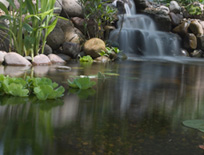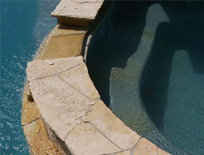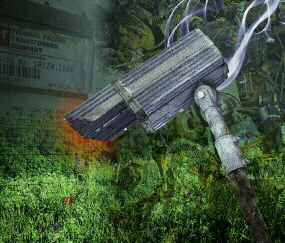ARTICLES
Advance Search
Aquatic Health
Aquatic Health, Fitness & Safety
Around the Internet
Aquatic Culture
Aquatic Technology
Artful Endeavors
Celebrity Corner
Life Aquatic
Must-See Watershapes
People with Cameras
Watershapes in the Headlines
Art/Architectural History
Book & Media Reviews
Commentaries, Interviews & Profiles
Concrete Science
Environment
Fountains
Geotechnical
Join the Dialogue
Landscape, Plants, Hardscape & Decks
Lighter Side
Ripples
Test Your Knowledge
The Aquatic Quiz
Other Waterfeatures (from birdbaths to lakes)
Outdoor Living, Fire Features, Amenities & Lighting
Plants
Ponds, Streams & Waterfalls
Pools & Spas
Professional Watershaping
Structures (Editor's Notes)
Travelogues & History
Water Chemistry
WaterShapes TV
WaterShapes World Blog
Web Links
Around the Internet
Aquatic Culture
Aquatic Technology
Artful Endeavors
Celebrity Corner
Life Aquatic
Must-See Watershapes
People with Cameras
Watershapes in the Headlines
In this series of occasional newsletter articles, the staff at Aquascape — a waterfeature design and installation company headquartered in St. Charles, Ill. — will offer information, advice and tips on creating and maintaining quality ponds, streams, waterfalls and pondless waterfeatures. Along the way, the coverage will range from the very basic — the sort of information you can use in training new staff and helping your clients — to the very advanced. To get things started, here's
By Mike Farley As someone who has spent years digging into the history of landscape and watershape design, it comes as something of a surprise to me that, alongside the luminaries who dominate discussions of the origins of familiar design approaches, motifs and styles, stands at least one practitioner who is not
Water passing from one level to another will always be a popular feature in watershapes — from the familiar spillways from spas into pools to the intricate flows found in many fountains, reflecting pools, runnels, rills and even koi ponds (to name a few possibilities). Depending on the application, these features might
One of the most common things I hear from my clients is that they’ve been inspired by experiences they’ve had at vacation resorts and want to recapture those good times in their own backyards. I’ve heard this often enough that I keep an eye out for volumes on resort design as I wander through bookstores and hunt for material online. It’s a narrow subject, of course, so I don’t run across too many relevant titles. That’s why I was immediately pleased to find Paradise by Design by Bill Bensley (Periplus Edition, 2008). My pleasure quickly turned to delight: The book is certainly about designing resorts – but it
With vast experience in both the residential and commercial markets, Kevin Ruddy is one of the watershaping industry’s foremost experts on the design and construction of indoor swimming pools and their surrounding environments. Here, in this first of two features covering a complicated residential project, he discusses the painstaking process of designing a pool and the systems that integrate it with the surrounding structure. It seems counterintuitive, but indoor swimming pool environments are wholly and entirely distinct from their outdoor cousins. The differences are mostly contained in the fact that, indoors, the designer needs to consider not only the pool and its hydraulic performance, but also the enclosure and the air-handling and dehumidification systems that makes these spaces comfortable and enjoyable for clients and their guests. Through years of designing and installing indoor pools, we at Omega Pool Structures (Toms River, N.J.) have learned – sometimes the hard way – what works and what doesn’t. Now, supported by more than two decades’ experience, we’ve
Fire effects have grown tremendously in popularity in recent years, especially among swimming pool designers and builders who use them in developing various fire-on-water features. On one level, it seems that these professionals (and their clients) have noticed that systems that contain and control fire serve as wonderful complements to systems that contain and control water. On a grander scale, however, it’s apparent that, as watershape designers and builders have become more and more creative, fire features have risen in the estimation of those who want to give their clients something special – something few others have. At my company, Grand Effects of Irvine, Calif., we’ve focused on making it easy for watershapers, general contractors and landscape designers and architects to bring fire into the picture across a range of applications. To that end, we’ve developed an array of completely off-the-shelf systems, ready to install, and have done all of the engineering and testing required to build confidence into every product. In doing so, we’ve studied possible effects and developed
Welcome to the first installment of “References,” an occasional feature that highlights professionals who contribute to the watershaping process. I (and eventually some others) will be using this space to identify people who have had a significant effect on my work – and to suggest how similar associations might be helpful to other watershapers. This time around, I’ll deal with something that has always been dear to my heart:
Call it human nature, free-market economics, the profit motive or whatever – the fact of the matter is that too many landscape lighting installers rely on low-cost products made with low-grade materials. Obviously, they do it to cut down costs either to squeeze more profit out of each job or to bring the price down to the level required to get clients to sign on the dotted line. So rather than reduce the number of fixtures used on a project or even turn down a project altogether, they’re clearly willing to win a job by using equipment that has no chance of lasting more than a






















On Water and Being Human